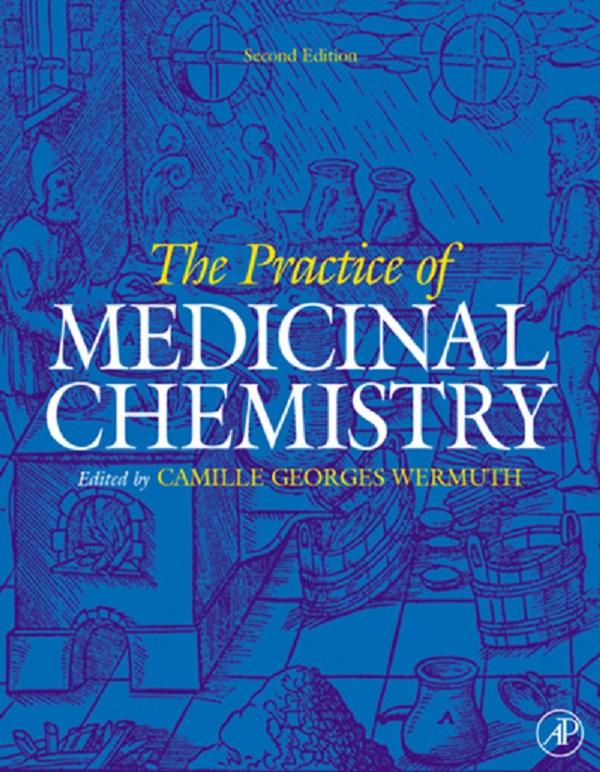The Practice of Medicinal Chemistry, 2E, is a single-volume source on the practical aspects of medicinal chemistry. The successful first edition was nicknamed "The Bible" by medicinal chemists, and the second edition has been updated, expanded and refocused to reflect developments over the last decade. Emphasis is put on how medicinal chemists conduct their search for and design of new drug entities. In contrast to competing books, it focuses on the chemistry rather than pharmacological concepts or descriptions of the various therapeutic classes of drugs. Most medicinal chemists working in the pharmaceutical industry are organic synthetic chemists who must acquire a strong knowledge of medicinal chemistry as they enter the industry. This book aims to be their practical handbook - a complete guide to the drug discovery process.
- The only book available dealing with the practical aspects of medicinal chemistry
- Serves as a complete guide to the drug discovery process, from conception of the molecules to drug production
- Updated chapters devoted to the discovery of new lead compounds, including combinatorial chemistry
Inhaltsverzeichnis
1;Front Cover;1 2;The Practice of Medicinal Chemistry;4 3;Copyright Page;5 4;Contents;6 5;Biography;9 6;Contributors;10 7;Foreword;12 8;Preface to the First Edition;14 9;Preface to the Second Edition;16 10;Part I: General Aspects of Medicinal Chemistry;17 10.1;Chapter 1. A brief history of drugs: from plant extracts to DNA technology;19 10.2;Chapter 2. Medicinal chemistry: definition and objectives, the three main phases of drug activity, drug and disease classifications;45 10.3;Chapter 3. Measurement and expression of drug effects;57 10.4;Chapter 4. Drug targets: molecular mechanisms of drug action;67 11;Part II: Lead Compound Discovery Strategies;83 11.1;Chapter 5. Strategies in the search for new lead compounds or original working hypotheses;85 11.2;Chapter 6. Natural products as pharmaceuticals and sources for lead structures;107 11.3;Chapter 7. Basics of combinatorial chemistry;127 11.4;Chapter 8. The contribution of molecular biology to drug discovery;137 11.5;Chapter 9. Electronic screening: lead finding from database mining;147 11.6;Chapter 10. High-speed chemistry libraries: assessment of drug-likeness;163 11.7;Chapter 11. Web alertusing the internet for medicinal chemistry;175 12;Part III: Primary Exploration of StructureActivity Relationships;189 12.1;Chapter 12. Molecular variations in homologous series: vinylogues and benzologues;191 12.2;Chapter 13. Molecular variations based on isosteric replacements;205 12.3;Chapter 14. Conformational restrictions and/or steric hindrance in medical chemistry;231 12.4;Chapter 15. Conformational restriction and/or steric hindrance in medicinal chemistry;249 12.5;Chapter 16. Identical and non-identical twin drugs;267 12.6;Chapter 17. Optical isomerism in drugs;291 12.7;Chapter 18. Application strategies for the primary structureactivity relationship exploration;305 13;Part IV: Substituents and Functions: Qualitative and Quantitative Aspects of StructureActivity Relationships;317 13.1;Chapter 19. Specific substituent gro
ups;319 13.2;Chapter 20. The role of functional groups in drugreceptor interactions;343 13.3;Chapter 21. Compound properties and drug quality;357 13.4;Chapter 22. Quantitative approaches to structureactivity relationships;367 14;Part V: Spatial Organization, Receptor Mapping and Molecular Modeling;387 14.1;Chapter 23. Stereochemical aspects of drug action I: conformational restriction, steric hindrance and hydrophobic collapse;389 14.2;Chapter 24. Pharmacophore identification and receptor mapping;403 14.3;Chapter 25. Three-dimensional quantitative structureproperty relationships;421 14.4;Chapter 26. Protein crystallography and drug discovery;433 14.5;Chapter 27. Protein homology modelling and drug discovery;461 14.6;Chapter 28. The transition from agonist to antagonist activity: symmetry and other considerations;475 14.7;Chapter 29. Design of peptidomimetics;493 15;Part VI: Chemical Modifications Influencing the Pharmacokinetic Properties;517 15.1;Chapter 30. The fate of xenobiotics in living organisms;517 15.2;Chapter 31. Biotransformation reactions;533 15.3;Chapter 32. Chemical mechanisms of toxicity: basic knowledge for designing safer drugs;561 15.4;Chapter 33. Designing prodrugs and bioprecursors;577 15.5;Chapter 34. Macromolecular carriers for drug targeting;603 16;Part VII: Pharmaceutical and Chemical Formulation Problems;617 16.1;Chapter 35. Preparation of water-soluble compounds through salt formation;617 16.2;Chapter 36. Preparation of water-soluble compounds by covalent attachment of solubilizing moieties;633 16.3;Chapter 37. Drug solubilization with organic solvents, or using micellar solutions or other;647 16.4;Chapter 38. Improvement of drug properties by cyclodextrins;665 16.5;Chapter 39. Chemical and physicochemical solutions to formulation problems;691 17;Part VIII: Development of New Drugs: Legal and Economic Aspects;703 17.1;Chapter 40. Discover a drug substance, formulate and develop it to a product;703 17.2;Chapter 41. Drug nomenclature;713 17.3
;Chapter 42. Legal aspects of product protection what a medicinal chemist should know about patent protection;723 17.4;Chapter 43. The consumption and production of pharmaceuticals;739 18;Index;767 19;Color Plate Section;785
